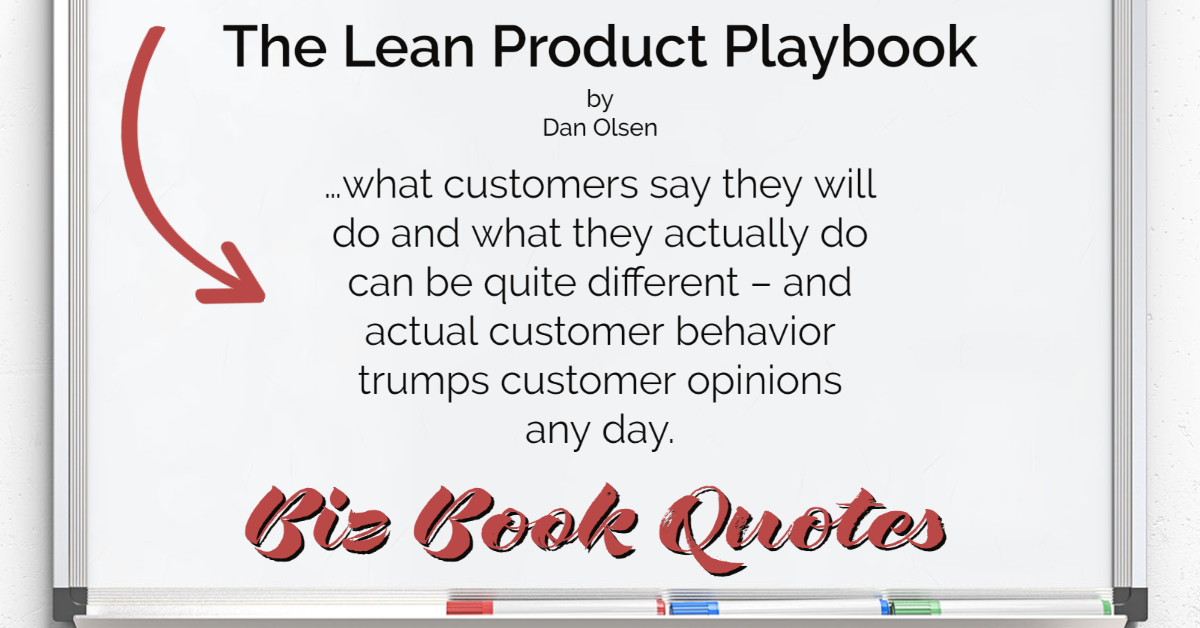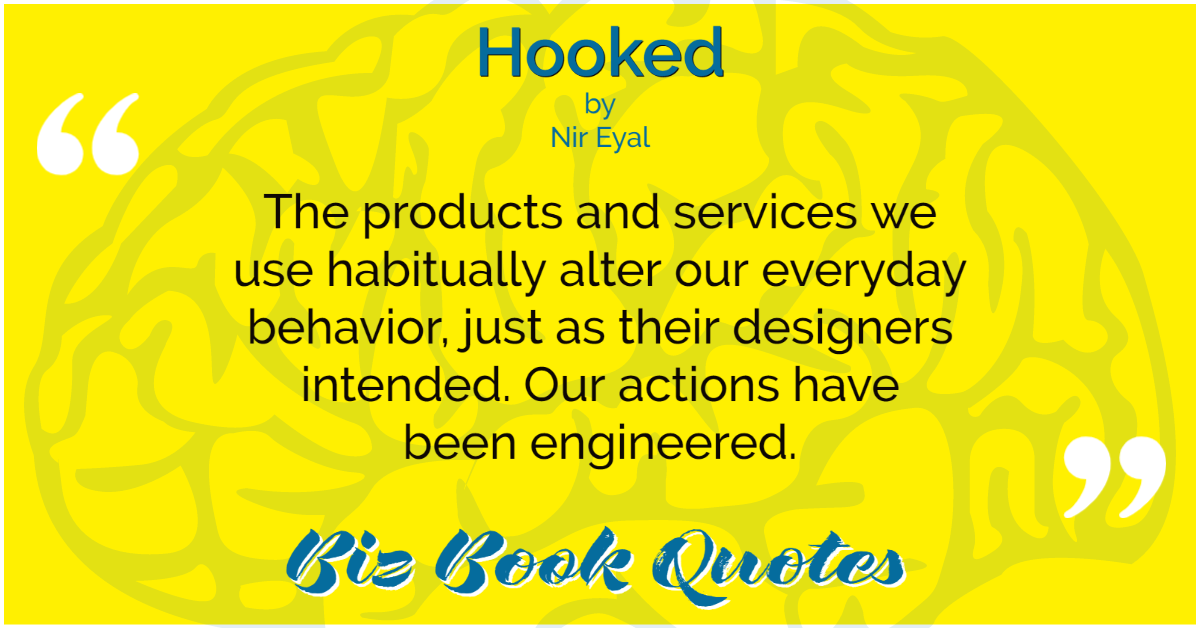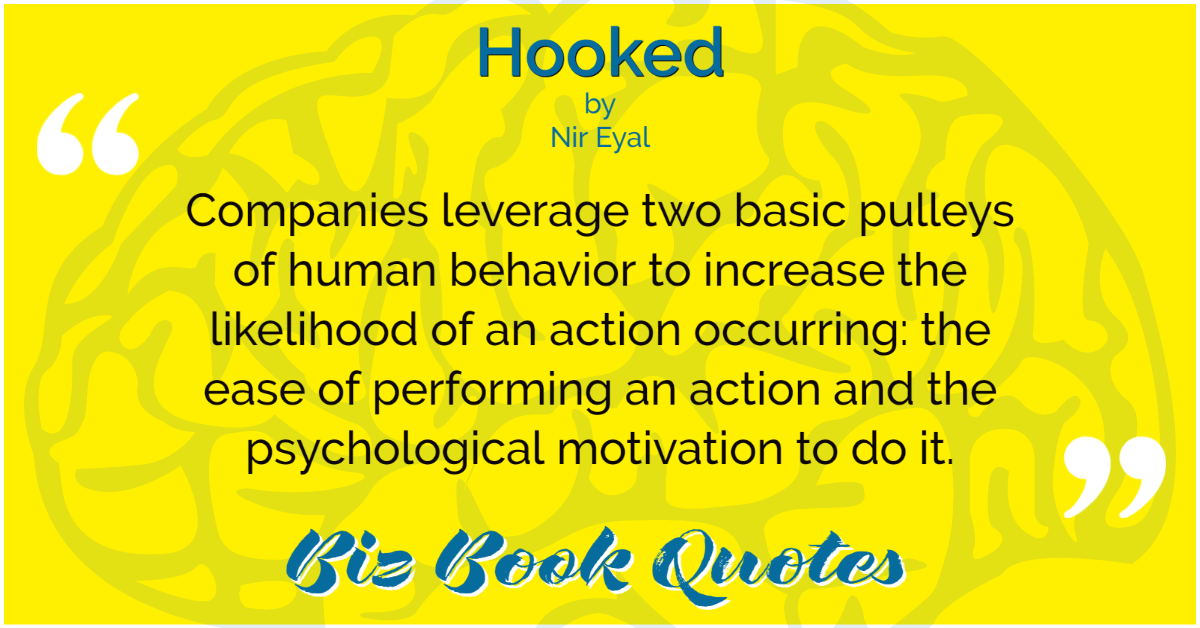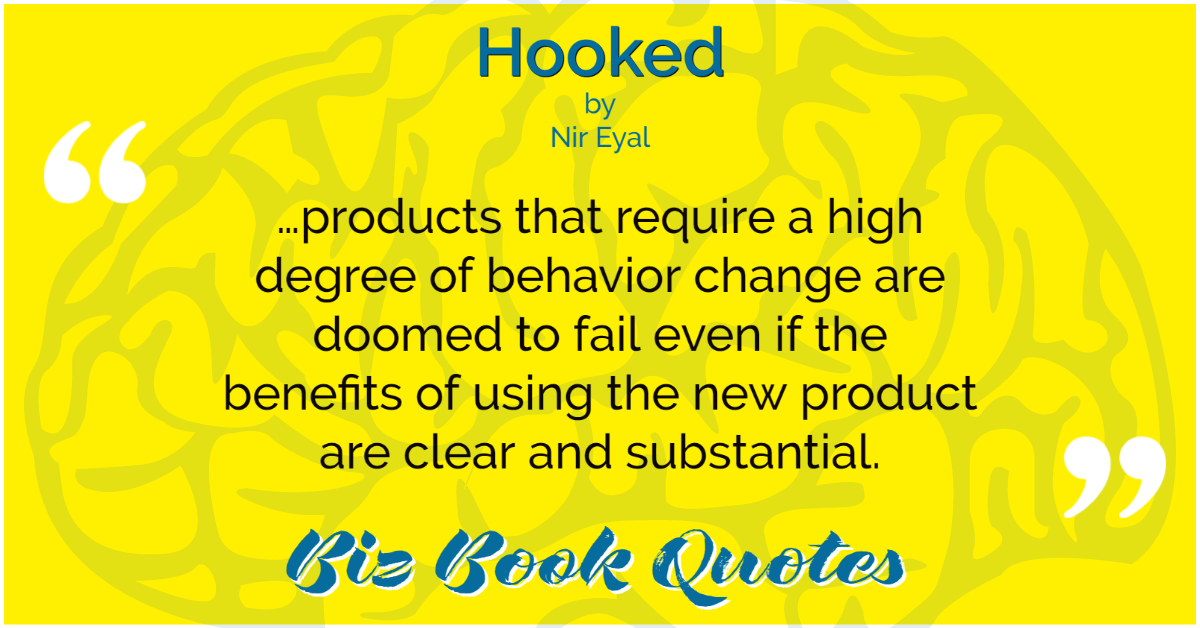 |
In general, the more local, tangible, concrete, and immediate the consequence, the more likely it is to influence individual behavior.
|
207 |
 |
You define your target customer by capturing all of the relevant customer attributes… [which] can be demographic, psychographic, behavioral, or based on needs.
|
26 |
 |
…what customers say they will do and what they actually do can be quite different – and actual customer behavior trumps customer opinions any day.
|
175 |
 |
The products and services we use habitually alter our everyday behavior, just as their designers intended. Our actions have been engineered.
|
1 |
 |
Companies leverage two basic pulleys of human behavior to increase the likelihood of an action occurring: the ease of performing an action and the psychological motivation to do it.
|
8 |
 |
…ingrained habits – behaviors done with little or no conscious thought… by some estimates, guide nearly half of our daily actions.
|
16 |
 |
…products that require a high degree of behavior change are doomed to fail even if the benefits of using the new product are clear and substantial.
|
23 |
 |
To initiate action, doing must be easier than thinking. Remember, a habit is a behavior done with little or no conscious thought.
|
61 |
 |
Pursuing a task to completion can influence people to continue all sorts of behaviors. Surprisingly, we even pursue these rewards when we don’t outwardly appear to enjoy them.
|
111 |
 |
…the most successful consumer technologies – those that have altered the daily behaviors of hundreds of millions of people – are the ones that nobody makes us use.
|
124 |